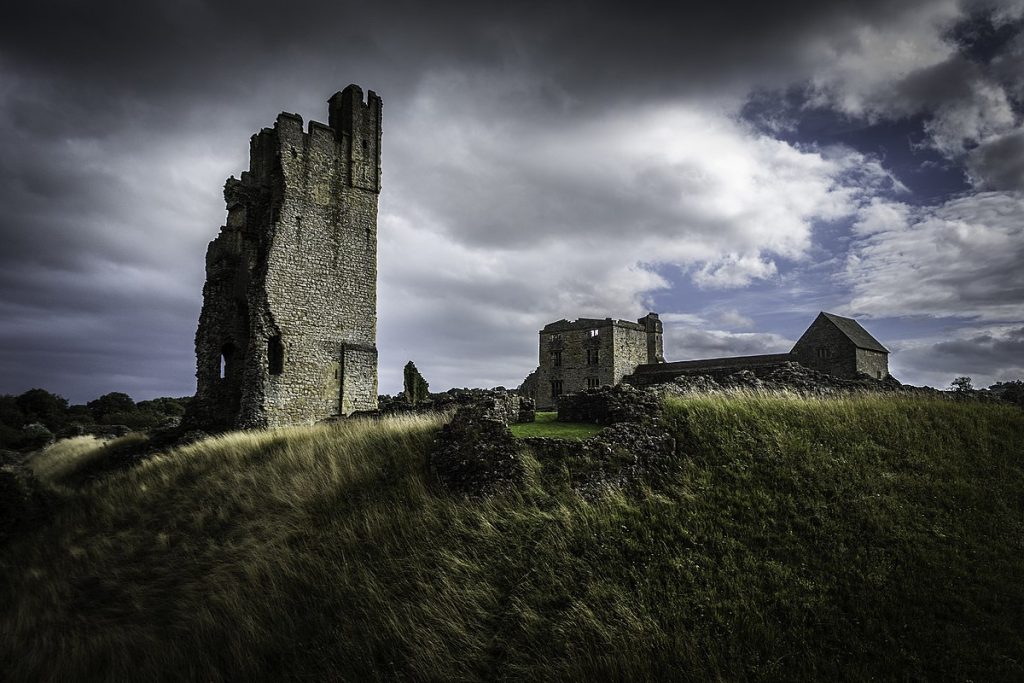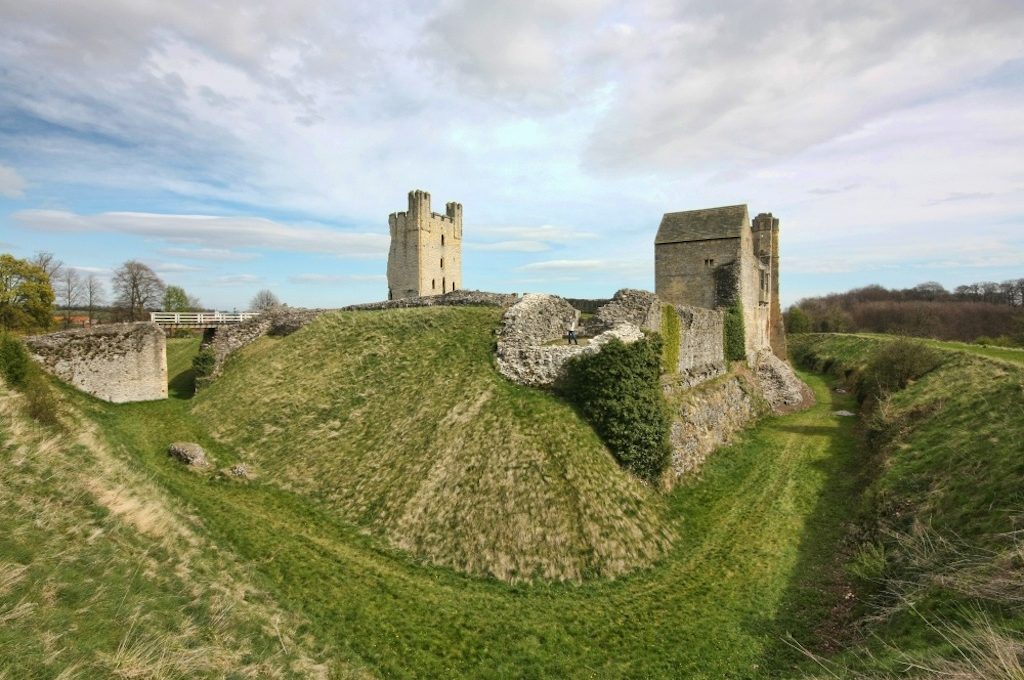
Helmsley Castle. Anciently known as Hamlake, is a Medieval castle situated near the market town of Helmsley. Surrounded by the gorgeous North York Moors National Park.
Foundations:

The estate of Helmsley was given to Robert, Count of Mortain. After the Norman Invasion. Yet at this time there is no evidence that he built a castle in the area. The first mention of a castle is a wooden fortification constructed around 1120 AD. This wooden castle was built by Walter l’Espec. Positioned on a strategic rocky outcropping overlooking the River Rye. It featured double ditches surrounded by a rectangular inner bailey. The castle bore little resemblance to other motte and bailey castles of the time, with it standing in stark contrast to the nearby Pickering Castle.
The castle at Helmsley was only 1.9 miles from Rievaulx Abbey and thus the land was granted to the Abbey. Aelred, who was the abbey’s first novice master, was known to be involved in the affairs of the estate and often used the castle as a place of safety during periods of instability in the realm.
Changing ownership:

Walter died childless. Leading to the castle Passing to his sister Adelina. Adelina married Peter de Ros and the castle then passed to his family line. In 1186 Robert de Ros began work on converting the castle to stone. He constructed two main towers and a main gateway on the south side of the castle. He died in 1227 granting the castle to his oldest son Willian who lived there from 1227 to 1258.
Conversion into living space:

The only change to the castle under William’s ownership was the construction of the chapel in the courtyard. The castle was eventually sold to Richard the third. However, Richard added nothing to the castle and after his death at the Battle of Bosworth, the castle was restored to the Ros line. In the 1500’s the castle was greatly changed. Starting with the old hall which was converted into a tudor style mansion. The 13th century chapel was converted into a kitchen linked to the old hall by a covered gallery and had the newer hall demolished. The southern barbican was then converted into a more comfortable residence.
Turmoil:

The castle was beseiged during the English Civil War. This was in 1644 and the castle held up against the siege for three months before surrendering to the Parliamentarians. Parliament ordered the castle to be damaged to remove its importance as a strategic hold. Much of the walls, gates and part of the east tower were destroyed. The mansion was spared from the destruction.
Private Ownership:

In 1695 the castle was sold to Charles Duncombe. He was a banker and politician. Becoming Lord Mayor of London in 1709. After Charles’ death in 1711 his sister’s husband, Thomas Brown, inherited the castle. Thomas Changed his name to Duncombe. He desired to build a country house at Duncombe park overlooking the castle, leaving the castle to decay. For this venture he hired William wakefield. As the castle fell into disrepair the local community took advantage of the site to hold fetes, pageants and even agricultural shows. The vicar of the local church frequently held events in the castle throughout the latter part of the 19th century.
Modern day:

The castle passed into the hands of the Office of Works in 1923. They began the clearing of debris and trees from the site. The castle’s remarkable earthworks were planned to be part of an anti-tank defense during the Second World War. Although this never came to pass as the invasion of England was highly unlikely. The castle is now in the care of English Heritage, standing as a testament to the heritage of the area with its maintenance sustained by the charity.



